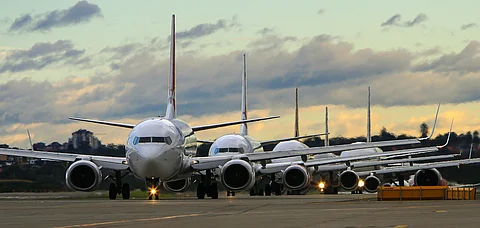
- Destinations
- Experiences
- Stay
- What's new
- Celebrating People
- Responsible Tourism
- CampaignsCampaigns
- Subscribe
- Buy Now

Direct flights between India and China were suspended in early 2020, initially citing COVID-19 disruptions. But the hiatus was extended by diplomatic stagnation and the fallout from the deadly 2020 Galwan clash along the contested India–China border, which killed 20 Indian and four Chinese soldiers.
Since then, travellers were forced to route via third countries such as Hong Kong, Singapore or Bangkok, prolonging travel time and costs.
Beginning in 2025, New Delhi and Beijing revived technical-level aviation discussions to finalise a revised Air Services Agreement and cleared the path for the aviation authorities to reset scheduled services.
In an official statement, India’s Ministry of External Affairs (MEA) said that “direct air services connecting designated points in India and China can resume by late October 2025, subject to the commercial decision of the designated carriers … and fulfilment of all operational criteria.”
While the broad commitment is now on the table, execution depends heavily on airline readiness, regulatory permissions, slot allocations and mutual carrier coordination.
Indian carrier IndiGo has boldly stepped forward as a frontrunner. It will relaunch daily nonstop flights between Kolkata and Guangzhou beginning October 26, 2025, using A320neo aircraft, pending final clearances.
Plans are also in motion for a Delhi–Guangzhou service, contingent on bilateral approvals.
On the Chinese side, airlines such as Air China, China Eastern and China Southern are expected to file for Indian slots, though their precise routes and schedules remain undisclosed.
Civil aviation sources suggest the restart will align with India’s winter schedule rollout.
The resumption of flights is more than an aviation reset — it carries diplomatic, economic, and symbolic significance.
Diplomatic thaw: This initiative complements broader efforts by the two nations to re-engage across trade, border mechanisms and regional frameworks. During his September 2025 visit to China, Indian Prime Minister Modi emphasised development partnership over rivalry.
Trade and people flows: Direct flights will ease the movement of business travellers, students and tourists, lowering time and cost friction. China remains one of India’s top trading partners—simpler air connectivity may further stimulate bilateral commerce.
Risk of rollback: Geopolitical tensions, border flare-ups or bureaucratic impasses could derail operations or force scaling back. The agreement explicitly leaves room for commercial discretion and operational judgments.
Regional message: In resuming ties, India and China signal their intent to recalibrate bilateral ties independent of external influence. Some analysts read this as a strategic message to third-party powers in Asia.
As October 2025 approaches, all eyes will be on aviation regulators and carriers. If seamless execution follows the agreement, the renewed air bridge could become one of the most tangible symbols of India–China détente. For travellers, businesses and diplomats alike, it’s a long-awaited opening—and a test of whether skies once closed can truly stay open again.
Direct commercial flights between India and mainland China are expected to resume by late October 2025, after a five-year suspension that began in early 2020. The first routes are likely to start with Kolkata–Guangzhou services operated by IndiGo.
Flights were halted in 2020 due to COVID-19 restrictions, followed by diplomatic tensions after the Galwan Valley clash. The pause extended for over five years, with travellers forced to transit through third countries such as Singapore or Hong Kong.
Indian carrier IndiGo will relaunch daily non-stop flights between Kolkata and Guangzhou from October 26, 2025, subject to final clearances. Chinese airlines like Air China, China Eastern, and China Southern are also expected to apply for routes to Indian cities.
The restart will make travel faster and cheaper by eliminating long layovers in other Asian hubs. It’s expected to boost tourism, business travel, student exchange, and trade connectivity between the two countries.
Yes. While both nations have agreed to reopen air services, border tensions or diplomatic strains could impact operations. However, the 2025 restart signals a strategic thaw and intent to normalise bilateral engagement.
